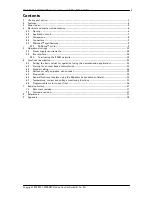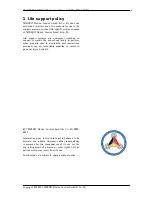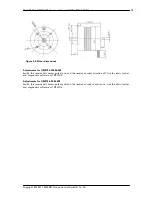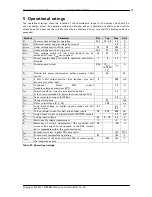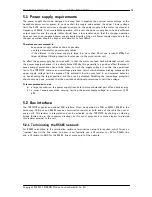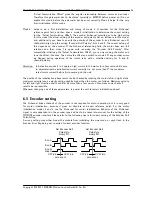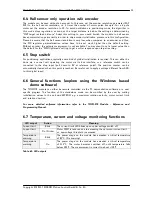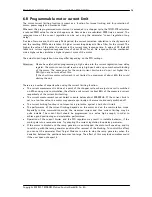
PDx-170-57-E / TMCM-170 Hardware Manual (V1.10 / 2011-NOV-24)
12
Copyright © 2011, TRINAMIC Motion Control GmbH & Co. KG
5.1
Power supply requirements
The power supply should be designed in a way, that it supplies the nominal motor voltage at the
desired maximum motor power. In no case shall the supply value exceed the upper / lower voltage
limit. The BLDC motor unit uses a chopper principle, i.e. the power supply to the motor is pulsed at a
frequency of 20kHz. To ensure reliable operation of the unit, the power supply has to have a sufficient
output capacitor and the supply cables should have a low resistance, so that the chopper operation
does not lead to an increased power supply ripple directly at the unit. Power supply ripple due to the
chopper operation should be kept at a maximum of a few 100mV.
Therefore we recommend to
˗
keep power supply cables as short as possible
˗
use large diameter for power supply cables
˗
if the distance to the power supply is large (i.e. more than 2-3m), use a robust 4700µF or
larger additional filtering capacitor located near to the motor driver unit.
An effect the power supply has to cope with, is, that the motor can feed back substantial current into
the power supply whenever it is actively braked! While this generally is a positive effect (because it
saves energy), precautions have to be taken, to limit the supply voltage to within the operational
limits. The TMCM-170 contains an overvoltage protection circuit, which disables braking whenever the
upper supply voltage limit is exceeded. This automatic function may lead to an unwanted behavior,
i.e. overshooting the target position, and thus can be disabled. Disabling the overvoltage protection
should only be done, provided that the user takes additional precautions to limit the voltage:
It is recommended to use
a)
a large capacitor on the power supply lines able to store substantial part of feed back energy
b)
a zener / suppressor diode circuitry, limiting the power supply voltage to a maximum of 52-
60V
5.2
Bus interface
The TMCM-170 supports an optional CAN interface. It can be operated via CAN or RS232 / RS485 in the
same way. CAN bus and RS485 require a termination resistor at both ends of the cable (but not at
every unit). This resistor is integrated and can be activated on the TMCM-170 by shorting a soldering
bridge (dotted line in the connector drawing), but for most purposes it is more elegant to provide
this resistor external to the unit.
5.2.1
Terminating the RS485 network
For RS485 in addition to the termination resistor a termination network is required, which forces an
“inactive” level to the line, when no driver is on. Typically, use a 1K resistor to + 5V for RS485+ line
and a 1K resistor to GND for the RS485- line at some point of the network.


